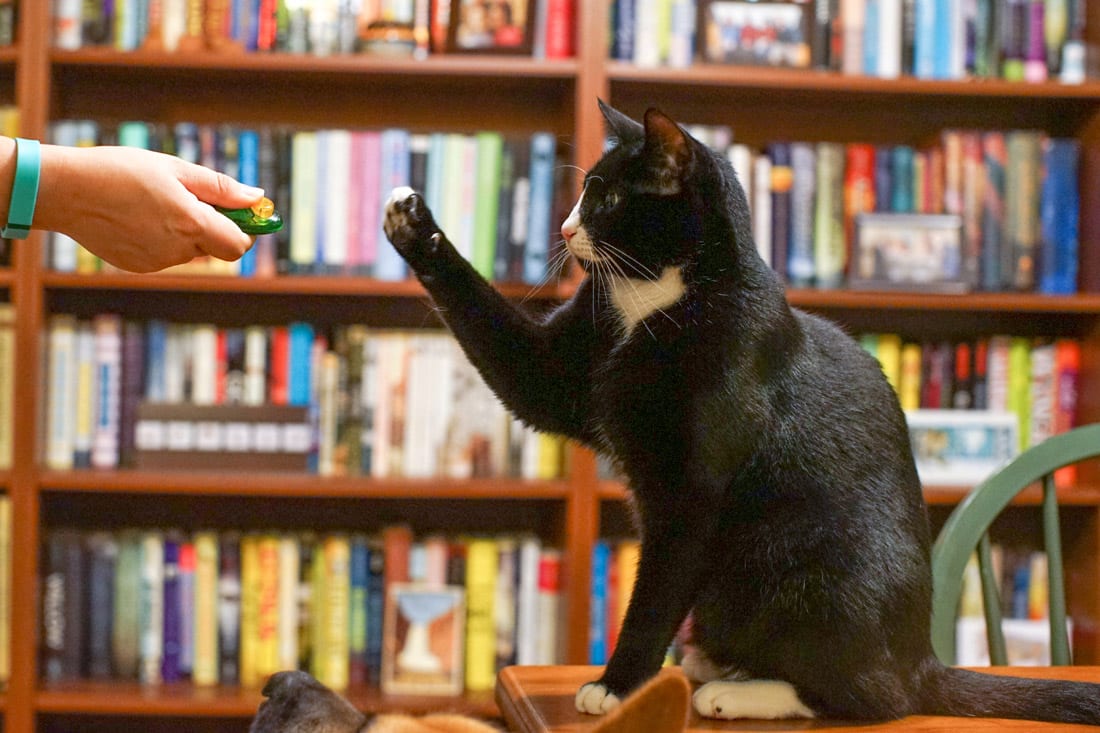KITTIES YOUNG AND OLD CAN EASILY LEARN NEW TRICKS
STORY: Laura J. Moss
PHOTO: Cody Wellons
There’s a common misconception that cats can’t be trained. However, the truth is that any cat can. It’s simply a matter of understanding your pet and what motivates him or her to work for a reward.
While dogs have been specifically bred to work for praise, cats, on the other hand, didn’t evolve to please their human caregivers. In fact, they essentially domesticated themselves when they moved into farming communities and settled into a mutually beneficial relationship with humans by providing rodent control. Since the two are such different animals, it makes sense that you can’t train a cat the same way you’d train a dog.
“People often believe cats are untrainable because they compare them to dogs,” says Mark Spivak, head trainer at Comprehensive Pet Therapy, which has a location in Sandy Springs. “In fact, cats are intelligent and trainable. Yet, whereas most dog owners insist that their dog adhere to basic obedience commands, few cat owners have the same expectations.”
There are numerous benefits to putting in a little training time with your feline friend. For one, it provides your cat with mental stimulation and physical activity, two things the average indoor cat doesn’t typically get enough of. “It’s mental stimulation your cat may not get otherwise,” says cat behaviorist Ingrid Johnson, who, through her company Fundamentally Feline, provides in-home behavioral consultations for clients in Buckhead and throughout the Atlanta metro area. “You can’t just expect [cats] to sit inside and look out a window for 20 years and be enriched.”
While any cat can benefit from training, owners often turn to behaviorists and trainers such as Johnson and Spivak because they’re interested in behavior modification. Some of the most common issues owners seek to correct are aggression and urinating or defecating outside of the litter box, problems that Spivak says account for 95 percent of Comprehensive Pet Therapy’s cat training appointments. However, owners don’t need to wait for a problem to arise before trying out some training. There are plenty of both practical and fun ways to engage your cat in training that will benefit you both.
“You’ve got really basic behaviors that can help get cats to the veterinarian, such as training them to willingly enter their carrier,” Johnson gives as an example. “You can also do target training, and this type of behavior can help with introducing cats to other cats or teaching them to take medications. There are also life-saving commands such as coming when called, which is a very important behavior to teach any pet.”
Plus, training can be entertaining. “You’ve got your fun stuff—your high fives, spins, skateboards, running through a tunnel,” says Johnson. Want to try out some training with your own kitty? You’ll find a wealth of tutorials on YouTube, and Johnson also suggests checking out the book The Trainable Cat, by John Bradshaw.
You may also want to get training tools such as a clicker or target stick, and it’s essential to have some tasty treats on hand to use as a reward, as cats learn through positive reinforcement, not punishment.
DETAILS:
Comprehensive Pet Therapy
cpt-training.com
Fundamentally Feline
fundamentallyfeline.com
Writer and pet columnist at Simply Buckhead. Author, AdventureCats.org founder, total cat lady.










